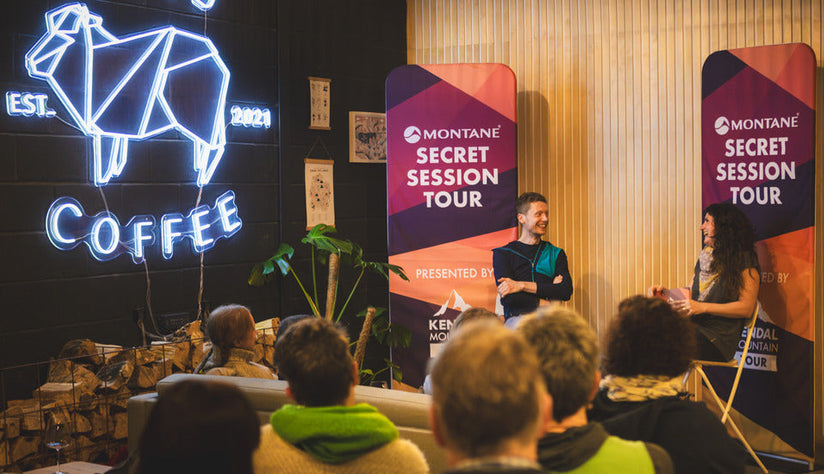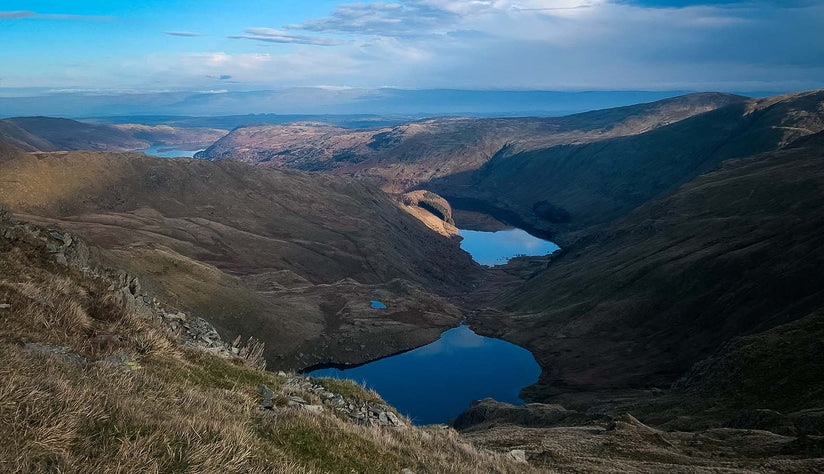Hello again! I’m Montane athlete, Alyssa Wendt, based out of Crested Butte, Colorado. I’m gearing up to take on the Grand Traverse Triple Crown in a couple of weeks. The first leg of the 3-part triple crown is the Grand Traverse Ski Race, which took place back in April of this year. My racing teammate and friend, Fanny, and I were excited to take 2nd place in the female division.

A quick recap of the Winter Grand Traverse
As is tradition (more on that in this dedicated blog about the race’s origins) the race started at midnight in Crested Butte, and we hit just about every weather condition imaginable. All this while also battling a number of issues – from slush to crust to mud to powder, near river crossing slips, whiteouts, dead batteries, broken packs, breathing issues, and failed climbing skins (the tool that adheres to the bottom of our skis to keep us from sliding backwards on the climbs).
Between family life and our busy schedules, Fanny and I actually only trained together for one hour the day before the race. But because we had done longer training runs in the past together, we trusted each other fully as partners. I’m proud of how Fanny and I navigated each hiccup and used our individual strengths to lift each other up on course and finish (mostly) smiling.

Looking ahead to the summer Grand Traverse
As winter turned to spring, I was excited to hunt for dry trails, slip on my running shoes, and hop back on my bike again. I enjoy the simplicity of running and I’m excited by the progress I’ve seen so quickly with biking. I ran cross country and track at the collegiate level and have since caught the endurance bug, slowly transitioning my way into the ultra running scene. I’m relatively new to biking, but it has quickly become my favourite sport and I find the balance between both running and biking to be a fun way to fight off burn-out and keep me healthy and motivated over a long season.
After a really strong summer of training last year, I tried to give the Triple Crown a go but had an ill-timed case of food poisoning 48-hours before the races. I ended up having to pull from the run a few miles from the finish and did not start the bike race the following day. I’m looking forward to giving it another try this year and will not be – fingers crossed– having any weird food run-ins prior to the race!

What is the Triple Crown?
The Grand Traverse Triple Crown consists of a 40-mile ski, run, and bike. The ski race takes place in the spring and is done with a partner. The run and bike legs of the event are done solo and take place on the same course, but on back-to-back days in early fall. Athletes doing the triple crown run the 40-miles to Aspen on a Saturday and then hop (or hobble) onto their bikes the next day and ride the course back to Crested Butte. Whoever has the lowest combined ski, run, and bike time snags the title for the Triple Crown gets their name etched into a plaque and the pride of knowing they are one of the few people crazy enough to step up to the challenge and win!
Each of the three events poses its own challenge. For the ski race, checking off the lengthy gear list, planning for various weather conditions, working around a midnight start, skiing through the night, and communicating effectively with your teammate all require a lot of time and preparation.
Of all three events though, I’d say the ski has the “least impact” on your body, and arguably ends in the best way possible – a few miles of downhill skiing straight through to the finish line! One obvious benefit of the run and bike race is being able to see the beautiful course that is mostly hidden in the dark during the ski race. The back-to-back days make the dual races much more challenging logistically and physically, but those challenges are undoubtedly part of the appeal.
So, why do I do it? For me, there’s something magnetic about the community and energy that surround the Grand Traverse, the creative thought and methodical process that goes into piecing together training for three different sports in a year, and the resilience to see if you can.

Training Tips
I’m at the point in my training and the timing of the race that it’s almost time to taper. But I’ll share a few training tips from my summer. Before I jump in, it’s always so important to emphasize that there’s no “right way” to train– there are many variables that differ greatly from person to person, such as experience level, where we live, and how much time we have to dedicate to training that need to be taken into consideration.
- I found that my aerobic endurance from ski racing translated well to running and biking, but the low impact in skiing did not. Building back more time on my feet slowly in the spring was key to keeping my bones healthy and happy. Over the course of the season, finding fun races to do and objectives nearby to run and ride kept my motivation high.
- Practice your systems! Eating and drinking on a bike was super awkward for me so I made sure to do some training rides/races where I got to see what works (and what didn’t).The same goes for running.
- Trust the process. Good things take time and so does building and experimenting in training. I’m still working on this one! Having friends join me for the “less fun” drill and strength days helped a ton.
- Simulate the course. This can look a lot of different ways, but if you have the ability to mimic variables you’ll experience over the race weekend, such as high altitude riding/running, getting in big runs followed by big rides the next day to see how your legs feel, or practicing trails that match the description of the course, you’ll be better off mentally and physically on race day.
- Focus on the little things. Stretch often, stay on top of hydrating and fuelling throughout the day, replace your running shoes after the recommended 300-500 miles, and stay on top of recovery. Remember, rest is productive! These little things will undoubtedly translate to race day where how well you stay on top of fuelling, hydrating, and recovering during and after the run the first day will impact how you’ll feel during the bike race the next day.

Essential Kit
Fall in Colorado can be a mixed bag of weather from rain to blue skies, with inevitably cooler mornings and warmer afternoons. The kit I’ll be wearing for race weekend will reflect that. Here’s a few essentials I’ll be packing for race weekend!
-
Montane Gecko VP 12+: This has been my go-to running vest for training this summer. It has ample storage for food and gear and an appropriate amount of straps to keep the pack secure.
-
Montane Unisex Podium Waterproof Pull-On Jacket: This is a no-brainer to keep in my pack. It’s a super lightweight essential to staying dry during monsoon season here in Colorado and doubles as a nice windbreaker for often breezy summit ridges.
-
Montane Coda Running Cap: This cap has been a super breathable, light-weight option to keep me protected from the sun this summer which will be crucial during the race with the high point of the Grand Traverse being near 13,000 feet at Star Pass.Be sure to cinch it tight though! It has a tendency to catch the wind easily.
-
Montane Trail Armguards: This is a good in-between layer for the fluctuating temperatures on race day. They are easy to slide on and take off as the temps warm.
-
Montane Women's Katla 4" Shorts: These are by far some of my favourite running shorts I’ve ever worn! They are super breathable, light, and a comfortable material perfect for long days on trail.
-
Montane Women's Katla T-Shirt: If you’re picking up a theme….lightweight and breathable are the name of the game for racing and the Katla fits the bill. I was sceptical about the colour choices at first but have been enjoying adding the super fun, bright blue to my kit.
-
Montane VIA Trail Ankle Gaiters: This will be a game day decision to throw in my race kit but has been a favourite item this summer to keep debris from getting into my shoes on trails with loose scree.
Feeling inspired?
Alyssa takes on the Grand Traverse Summer Races on the 03 & 04 September. Discover more about the race on our event hub.
















